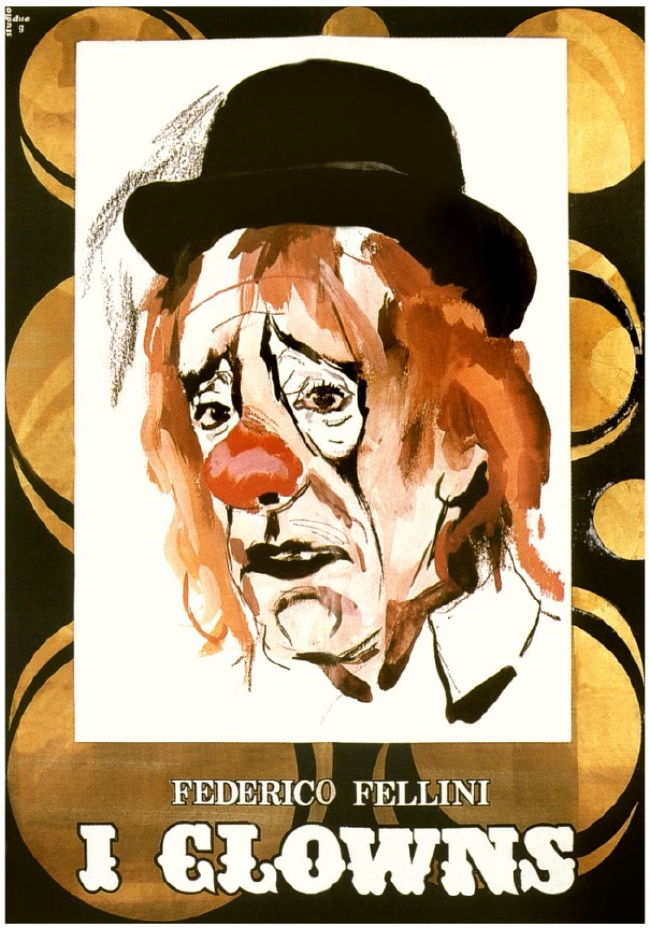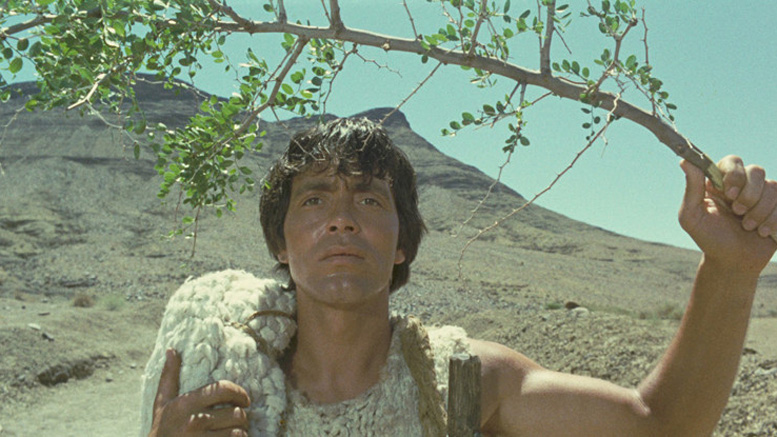
Article taken from Continental Film Review, September 1970
The figure of the clown is surely one of the greatest in art. At once the dual symbol of laughter and tears – comedy and tragedy – it’s not surprising that artists such as Roualt and Picasso have given us moving studies and, more recently, Bernard Buffet has done some very characteristic work on the theme.
Despite the fact that Fellini says that clowns make him frightened (they remind him of his childhood fantasies: the drunks, the deformed, the lunatics and the fascists with the high fez and the station master who didn’t take his cap off even at the table) the director has always been preoccupied with them. Even to the legend that he ran away briefly from home to join a circus when he was a boy in Rimini.
He certainly touches us most surely with those characters who are clowns or resemble them: Gelsomina, Cabiria, the clown in La dolce vita. 81/2 and Juliet of the Spirits were attempts at intellectualism which dod not come too comfortably – brilliant though those films were. With Satyricon he had an opportunity of combining an intellectual allegory with the emotional freedom of the clown, and Fellini’s assurance is here in evidence.
Then, for his first big hour and a half TV extravaganza (in black and white for Italy and colour overseas), Fellini decided to make a film about clowns.
For inspiration as much as background, Fellini went to Paris last spring – the Paris of the Cirque D’Hiver and the Medrano and where, at a farewell dinner, Tristan Remy (perhaps the greatest expert on the circus and author of the basic ‘The Clowns’) said: “The main defect of the clowns was that they were not intelligent, that’s the truth.”
Educated, perhaps, the clowns were not. Intelligent they were, with a natural grasp of life’s fundamental pessimism, which must be hidden with a smile. It is this lack of intellectualism – the basic duality that touches us. It is the early Chaplin that moves us, the intellectual Chaplin simply makes us laugh.
Who was the greatest clown? Fellini asked the age old question: Antonet and Beby, the Fratinellis, Rhum, Grock, Dario and Bario – all are dead now, with the exception of Bario. But the name of Rhum seemed to remain.
Back in Rome a brief 8mm TV film of Rhum was sent to Fellini. It proved only that legends are difficult to revive.
Fellini’s TV film is an homage to ‘the fantasy and the absurdity of the circus’ beginning with a great book called Entrees clownesque – a collection of the most famous clown scenes; the bullfight, the telephone, the mechanical woman, the sweet in the hair, and other dadaistic titles. Fellini was a bit optimistic when he said: “Everything is there – one only has to film the best.”

I find it interesting how people deal with coulrophobia in different ways. Some have nightmares… Others create works of art!